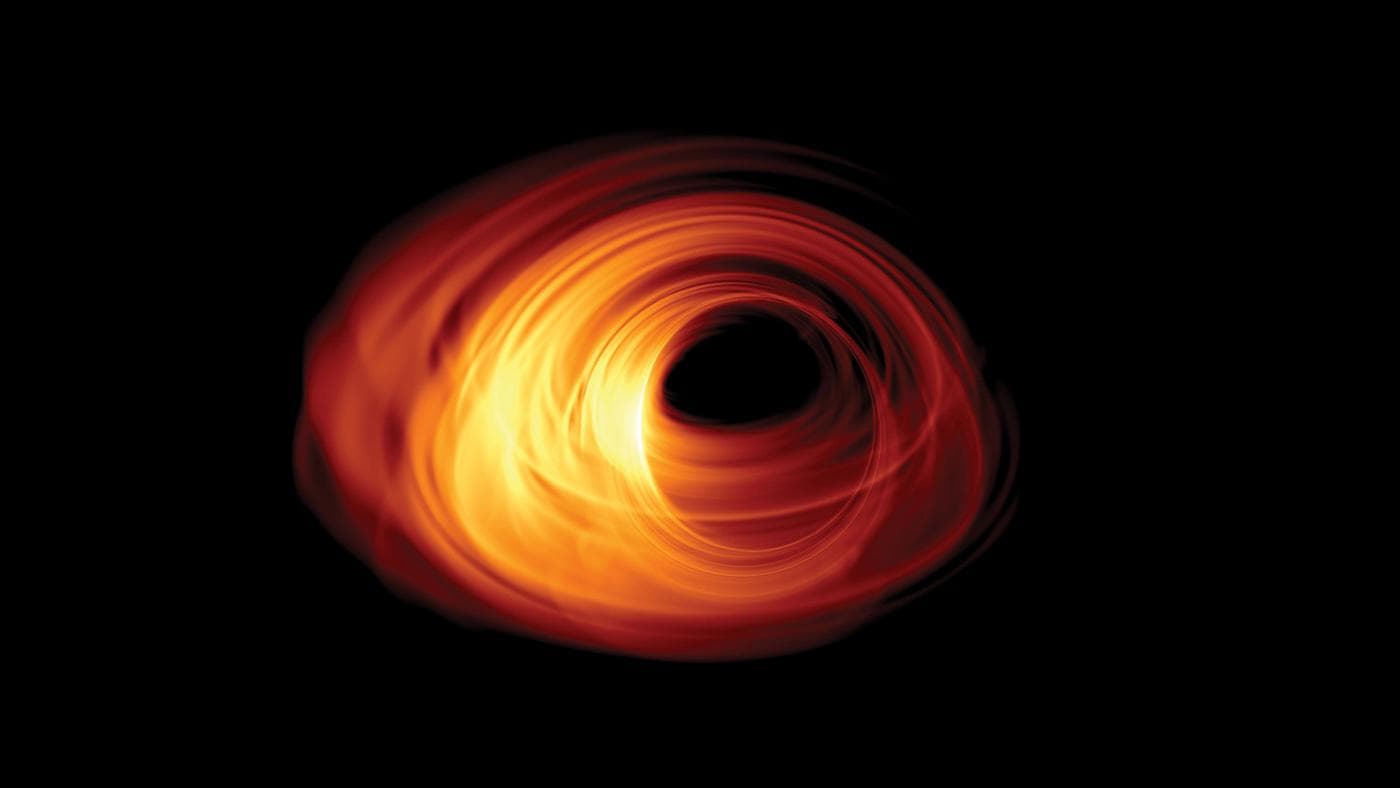The second photo of the first supermassive black hole photographed by mankind, located in the center of the Messier 87 galaxy (M87), became an event that amazed the scientific world. The image captured by the Event Horizon Telescope (EHT) on April 21, 2018, is the successor to the previous photo taken in 2017. Scientists were amazed that the shadow of the black hole remained unchanged during this period, as predicted by Albert Einstein in 1915.

Compared to the first image, the new image of M87* continues to amaze with its beauty and scientific importance. The image shows a shining golden ring representing matter orbiting a black hole at extreme temperatures. However, a dark region known as the gravitational shadow is observed in the center of this ring, which confirms Einstein’s theory of gravity.
The photograph also becomes evidence of the high accuracy of the theory of gravity, which assumes that the width of M87* will remain constant until its mass undergoes significant changes. Therefore, it confirms that the radius of a black hole really depends on its mass. The study of the image also reveals changes in the brightness of the disk associated with the turbulence of matter gradually rushing towards the black hole. This provides new information about the processes that occur in the largest objects in the universe.
The most important black hole for science
M87* is located 55 million light-years from Earth in the galaxy M87. Its mass is equivalent to about 6.5 billion Suns. This black hole actively feeds by absorbing the surrounding matter and emitting powerful magnetic fields that direct material to its poles.

M87* first entered the lens of the EHT telescope on April 11, 2017. Further analysis of the data showed that the polarized light around the black hole provided important information about the structure of magnetic fields and the jet coming out of it. Interestingly, the images of M87* in 2017 and 2018 are strikingly similar: the bright rings around the black hole remain almost the same. This is an important discovery, as it indicates that the mass of M87* remains almost unchanged, and its diameter, which captures light, that is, the event horizon, also remains constant. This corresponds to the general theory of relativity, which states that the diameter of a black hole directly depends on its mass.
“One of the remarkable properties of a black hole is that its radius is strongly dependent on only one quantity: Its mass. Since M87* is not accreting material (which would increase its mass) at a rapid rate, general relativity tells us that its radius will remain fairly unchanged over human history. It’s pretty exciting to see that our data confirm this prediction,” explained NASA Jet Propulsion Laboratory scientist Nitika Yadlapalli Yurk.

Although scientists expect that the black hole M87* will not increase its mass so quickly that it will become noticeable in a human lifetime, the new image helps confirm this assumption. However, this does not mean that nothing has changed between the two points in time depicted in the EHT close-up. In the new image, the peak brightness of the ring shifted by 30 degrees counterclockwise. This confirms the turbulence of the matter surrounding the black hole and provides information for further studies of the magnetic field and plasma environment surrounding M87*.
Earlier, we reported on how artificial intelligence helped astronomers with a picture of a black hole.
According to Space
Follow us on Twitter to get the most interesting space news in time
https://twitter.com/ust_magazine


